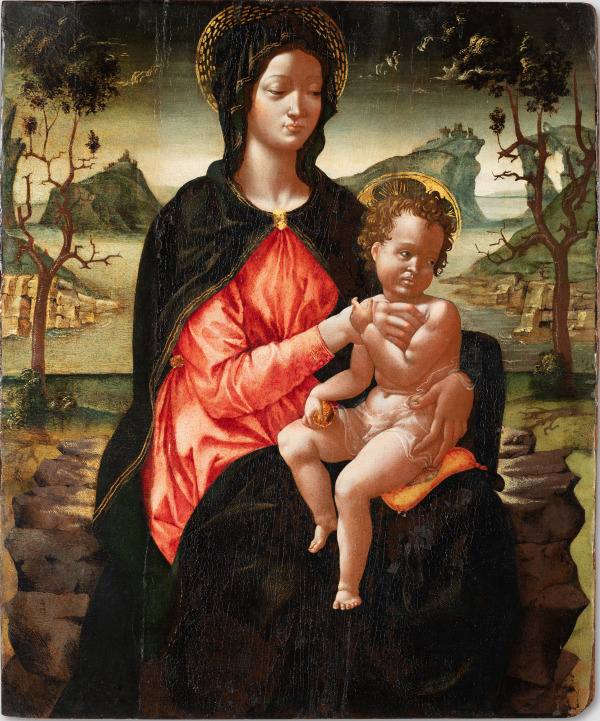-
Biography
Giotto di Bondone also known as Giotto (Vicchio, Italy 1265 - Florence, Italy 1337)
Giotto di Bondone, known more simply as Giotto, was born on the outskirts of Florence into a peasant family. His strong inclination for art was noticed by Cimabue, who took him with him to Florence to educate him.
Dante, his peer, recognised his role in starting a new phase of Italian painting, later underlined also by Vasari.
Giotto is best known for the way he explored the possibilities of perspective and pictorial space, bringing a new sense of realism to his religious parables. His interest in humanism led him to explore the tension between biblical iconography and the everyday life of worshippers, bringing them closer to God by making art more relevant to their daily lives. He imbued his figures with an emotional quality new for refined art, his architectural settings respecting the visual laws of proportion and perspective.
The main series of frescoes by Giotto, still visible today, are those in the Arena Chapel in Padua, which probably date to just before 1305, and those in the Bardi and Peruzzi Chapels in Santa Croce in Florence, probably from before 1328.
Among the few undisputed panel paintings is the Madonna All Saints, today in the Florence Uffizi.
Concentration and gravity are the hallmarks of Giotto's style and his figures, notable for their expressiveness and three-dimensional consistency, inhabit architectural spaces that seem real for the first time.
After a prolific production in many of the most important cities of Italy, Giotto died in Florence in 1337.
Photo UniCredit Group (Sebastiano Pellion di Persano)
-
Works







